 |
King of Chemicals Manufacturers |
Specifications, Properties, Uses, SDS of Metoprolol Succinate USP BP Ph Eur IP EP Food Grade Manufacturer Supplier Exporter Wholesale & Small Packs, CAS Number yyy. |
|
| King of Chemicals has several associated companies having accreditations like cGMP, GLP - FDA Approved Good Manufacturing Practice and Good Laboratory Practice of WHO standard, ISO-9001, ISO-14001, ISO/IEC 17025, ISO ISO-45000, HACCP, FSSC 220000, FSSAI, "REACH" Registered, Kosher & Halal Certified. e-CTD and DMF support can be made available if needed. We offer USP NF BP Ph Eur EP IP JP Analytical Reagent FCC Food Grade Chemicals & Nutraceuticals. | |
        |
|
Muby Chem Pvt. Ltd. is a several decades old group of companies, engaged in manufacturing, supplying, distributing, wholesale supplies of Metoprolol Succinate USP BP Ph Eur IP EP Food Grade for actual users, including retail or small pack supplies for research and development work.
We supply fine and speciality chemicals, pharmaceutical excipients, mineral fortifiers in chemically pure, analytical reagent grade, IP BP USP Ph Eur EP JP and other pharmaceutical grade monograph including FCC Food grade chemicals and Nutraceuticals at best prices. We and/or our associated units have all the facilities to supply as per cGMP standard observing good manufacturing practice and good laboratory practice. We can assure low microbial count and also offer a test certificate for the same. We maintain warehouses across USA, India, and UAE. Our group exports to USA, Canada, Mexico, Argentina, Brazil, Chile, Korea, Malaysia, Thailand, Indonesia, Europe, and several other parts of the world. We supply in wholesale container loads to small pack of few grams. Solid products may be specified for it size and shape as desired by the buyer.


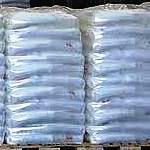

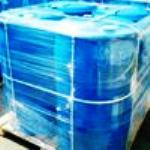
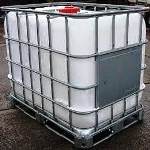
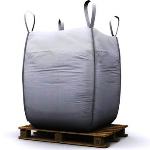
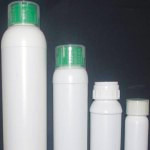
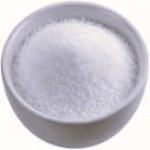
Metoprolol Succinate CAS Number 98418-47-4 or 123245-49-8
For Properties Specifications Uses of Metoprolol Succinate Click Properties, Specifications, Uses, Price, Process of Metoprolol Succinate Manufacturer.
For For SDS MSDS Sheet of Metoprolol Succinate Click SDS Safety Data Sheet MSDS Sheet of Metoprolol Succinate Manufacturer.
The Properties, Specifications, Monograph and Uses of Metoprolol Succinate:
Metoprolol Succinate is a beta-blocker used to treat chest pain, heart failure, and high blood pressure.
Metoprolol Succinate BP Ph Eur Grade:
C34H56N2O10 --- 653 CAS 98418-47-4
DEFINITION
Bis[(2RS)-1-[4-(2-methoxyethyl)phenoxy]-3-[(1-methylethyl)amino]propan-2-ol] butanedioate.
Content: 99.0 per cent to 101.0 per cent (dried substance).
CHARACTERS
Appearance: White or almost white, crystalline powder.
Solubility: Freely soluble in water, soluble in methanol, slightly soluble in ethanol (96 per cent), very slightly soluble in ethyl acetate.
IDENTIFICATION
Infrared absorption spectrophotometry.
TESTS
Solution S: Dissolve 0.500 g in carbon dioxide-free water and dilute to 25.0 mL with the same solvent.
Appearance of solution: Solution S is not more opalescent than reference suspension II and is colourless.
pH: 7.0 to 7.6 for solution S.
Impurities ;M, N, O: to pass the test by Thin-layer chromatography.
Related substances: To pass the test by Liquid chromatography.
Metoprolol Succinate USP Grade Specifications:
(C15H25NO3)2-C4H6O4 --- 652.82
2-Propanol, 1-[4-(2-methoxyethyl)phenoxy]-3-[(1-methylethyl)amino]-, (±)-, butanedioate (2:1) (salt).
(±)-1-(Isopropylamino)-3-[p-(2-methoxyethyl)phenoxy]-2-propanol succinate (2:1) (salt) CAS 98418-47-4.
UNII: TH25PD4CCB
UNII: GEB06NHM23
Metoprolol Succinate contains not less than 98.0 percent and not more than 102.0 percent of (C15H25NO3)2-C4H6O4, calculated on the dried basis.
Clarity and color of solution: A solution of Metoprolol Succinate having a concentration of 20 mg per mL is not less clear than an equal volume of water in a test tube of similar size. The absorbance of the solution determined at 440 nm in a 5-cm cell, using water as the blank, is not more than 0.1.
Identification: Infrared Absorption.
pH: between 7.0 and 7.6, in a solution containing 65 mg per mL.
Loss on drying: Dry it in vacuum at 60C for 4 hours: it loses not more than 0.2% of its weight.
Residue on ignition: not more than 0.1%.
Related compounds: To pass the test.
Metoprolol Succinate is also available as per EP IP grade monograph.
The MSDS-SDS Hazard Statement of Metoprolol Succinate:
Metoprolol Succinate SDS, Safety Data Sheet
MSDS Sheet, Material Safety Data Sheet 08-April-25
1. Product Identification
Product Name & Other Names: Metoprolol Succinate.
CAS No.: 98418-47-4 or 123245-49-8
EINECS, EC Number: 620-476-9
Relevant uses and uses advised against (if any): Industrial Manufacturing.
2. Hazards Identification
GHS, Globally Harmonized System Classification in accordance with 29 CFR 1910
Classification according to Regulation (EC) No 1272/2008
Skin corrosion/irritation Category 2, H315
Serious eye damage/eye irritation Category 2A, H319
Specific target organ toxicity, single exposure; Respiratory tract irritation Category 3, H335
Specific target organ toxicity - single exposure, Category 1, H370
Labelling according to GHS & Regulation (EC) No 1272/2008
GHS Label Elements  Irritant |
Signal Words: Warning
Hazard statements:
H315: Causes skin irritation.
H319: Causes serious eye irritation.
H335: May cause respiratory irritation.
H370: Causes damage to organs.
Precautionary statements:
P262: Do not get in eyes, on skin, or on clothing.
P280: Wear protective gloves/protective clothing/eye protection/face protection.
P302+P352-IF ON SKIN: Wash with plenty of soap and water.
P304+P340: IF INHALED: Remove victim to fresh air and keep at rest in a position comfortable for breathing.
P305+351+338: IF IN EYES: Rinse cautiously with water for several minutes. Remove contact lenses if present and easy to do – continue rinsing.
P332+313: If skin irritation occurs: Get medical advice/attention.
P337+P313: If eye irritation persists: Get medical advice/ attention.
3. Composition/Information on Ingredients
Product Name & Other Names: Metoprolol Succinate.
CAS No.:
EINECS, EC Number: 620-476-9
4. First Aid Measures
Always seek medical attention after first aid measures are provided.
Inhalation: Remove to fresh air. If not breathing, give artificial respiration. If breathing is difficult, give oxygen. Get medical attention.
Ingestion: Never give anything by mouth to an unconscious person. Get medical attention.
Skin Contact: Wipe off excess material from skin then immediately flush skin with plenty of water for at least 15 minutes. Get medical attention.
Eye Contact: Immediately flush eyes with plenty of water for at least 15 minutes, lifting lower and upper eyelids occasionally. Get medical attention immediately.
5. Fire Fighting Measures
Flammability of the Product: Combustible at high temperature.
Products of Combustion: Nitrogen oxides, Carbon dioxide, Carbon monoxide, fumes.
Fire: Flammable in the presence of open flame.
Fire Extinguishing Media: Use water spray, alcohol-resistant foam, dry chemical, or carbon dioxide. Avoid heavy water jet as it can scatter the fire. Use means suitable for extinguishing surrounding fire.
Special Information: Fire-extinguishing work is done from the windward and the suitable fire-extinguishing method according to the surrounding situation is used. In the event of a fire, wear full protective clothing and NIOSH-approved self-contained breathing apparatus with full face piece operated in the pressure demand or other positive pressure mode.
6. Accidental Release Measures
Personal precautions, protective equipment, and emergency procedures: Avoid breathing dust/fumes/gas/mist/vapors/spray. Use individual protective equipment (waterproof boots, suitable protective clothing, safety glasses, etc.).
Environmental precautions: Do not let the product enter drains, soil, or water sources.
Methods and materials used for containment cleanup procedures and Storage:
Do not inhale dust, vapors, mist, or gas. Avoid dust formation. Contain spilled material. Cover with an inert, non-combustible absorbent material, (e.g., sand, earth, diatomaceous earth, vermiculite). Use a shovel to put the material into a convenient waste disposal container.
7. Handling and Storage
Precautions for safe handling: Apply according to good manufacturing and industrial hygiene practices. Ensure proper ventilation. In case of insufficient ventilation, wear suitable respiratory equipment. Do not drink, eat, or smoke while handling. Avoid contact with skin, eyes, and clothing. Minimize dust generation. Avoid breathing dust/fumes/gas/mist/vapors/spray. Keep container tightly closed. Avoid ingestion and inhalation. Use individual protective equipment (waterproof boots, suitable protective clothing, safety glasses, etc.).
Conditions for safe storage, including any incompatibilities: Store in cool, dry, and ventilated area away from heat sources and protected from sunlight in tightly closed original container. Keep air contact to a minimum. Store protected from heat, sparks and ignition sources and incompatible materials. Avoid inhalation of dust/mist/vapor. Do not store with incompatible materials like strong oxidizing agents. Storage: Store at 4C in tightly closed containers, protected from light.
8. Exposure Controls/Personal Protection
Airborne Exposure Limits: Not Established.
Ventilation System: A system of local and/or general exhaust is recommended to keep employee exposures low.
Personal Respirators (NIOSH Approved): For conditions of use where exposure to dust or mist is apparent and engineering controls are not feasible, a particulate respirator may be worn.
Skin Protection: Wear protective gloves and clean body-covering clothing.
Eye Protection: Use chemical safety goggles and/or full-face shield where dusting or splashing of solutions is possible. Maintain eye wash fountain and quick-drench facilities in work area.
Other Control Measures: Maintain good housekeeping in work area. Handle in accordance with good industrial hygiene and safety practice.
9. Physical and Chemical Properties
Appearance: White or almost white, crystalline powder.
Odor: No data found.
Odor threshold: No data found.
pH: No data found.
Relative density: No data found.
Melting Point: 142C to 148C.
Initial boiling point and boiling range: 399C.
Flash point: No data found.
Auto-ignition temperature: No data found.
Decomposition temperature: No data found.
Upper/lower flammability or explosive limits: No data found.
Vapor pressure: No data found.
Vapor density: No data found.
Evaporation rate: No data found.
Flammability (solid, gas): No data found.
Partition coefficient: n-octanol/water: No data found.
Solubility: It is freely soluble in water; soluble in methanol; sparingly soluble in ethanol.
Viscosity: No data found.
10. Stability and Reactivity
Stability: Stable under recommended conditions of use and storage.
Hazardous Decomposition Products: It emits Oxides of Nitrogen, Carbon dioxide, Carbon monoxide & Fumes.
Hazardous Polymerization: Will not occur.
Incompatibilities: Strong oxidizing agents.
Conditions to Avoid: Incompatibles, heat & direct sunlight.
11. Toxicological Information
Toxicity data: No data found.
Carcinogenic Effects: No component of this product present at levels greater than or equal to 0.1% is identified as probable, possible, or confirmed human carcinogen by IARC.
Reproductive toxicity: No data found.
Germ cell mutagenicity: No data found.
Danger of serious damage to health by prolonged exposure.
12. Ecological Information
Environmental Fate: No data found.
Environmental Toxicity: No data found.
Persistence and degradability: Unlikely to persist due to water solubility.
Bioaccumulative potential: No data found.
Mobility in soil: Likely to be mobile due to water solubility.
Results of PBT and vPvB assessment: No information found.
13. Disposal Considerations
Whatever cannot be saved for recovery or recycling should be managed in an appropriate and approved waste disposal facility. Follow all the pollution cintol rules.
14. Transport Information
DOT USA, TDG Canada & ADR/RID Europe: Not controlled.
IATA: Not controlled.
IMDG/IMO: Not controlled.
15. Regulatory Information
USA:
SARA 311/312 Hazards: Acute health hazard.
California prop. 65: Not listed for causing cancer, birth defects or reproductive harm.
Section 16 - Additional Information
Disclaimer:
**************************
Our company provides this MSDS sheet in good faith but makes no representation as to its comprehensiveness or accuracy. This SDS sheet is intended only as a guide to the appropriate precautionary handling of the material by a properly trained person using this product. The above information has been compiled from various sources and has the possibility of discrepancy and being out-dated information. Individuals receiving the information must exercise their independent judgment and do further search in determining its appropriateness for a particular purpose. In no case shall our company be liable to loss or damages by the product user.
**************************

Metoprolol Succinate Manufacturers, Suppliers, Exporters, Wholesalers:
King of Chemicals manufacturers

Plot No. 2900/46&47 + 2900/163to167, GIDC, Ankleshwar, Dist. Bharuch, India
India, USA, UAE
TEL: (Office) 91-22-23774610, 91-22-23723564
e-mail: info@kingofchemicals.com
Copyright and Usual Disclaimer is Applicable --- April 8, 2025
If I give you “My Word” Nobody can undo it.
If I sign an “Agreement” my Lawyer will undo it
Our products are for industrial and laboratory use only. The user must test the material before use. We are not dispensing chemists or druggist and do not offer over the counter type (OTC) products for medical use by individuals.
We and our associates manufacture pure chemicals surpassing Monograph Specifications of Analytical Reagent Standards, British & European Pharmacopoeia BP Ph Eur EP Standard, US Pharmacopoeia USP NF Standard, Indian Pharmacopoeia IP Standard, Japan Pharmacopoeia JP Standard, FCC Food Grade Standard. |
|